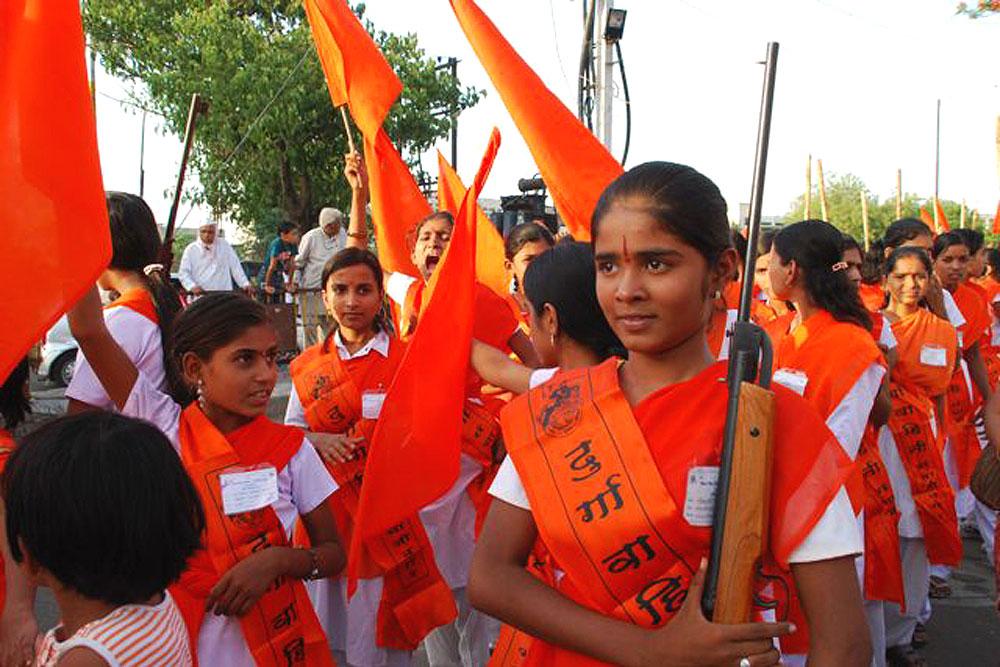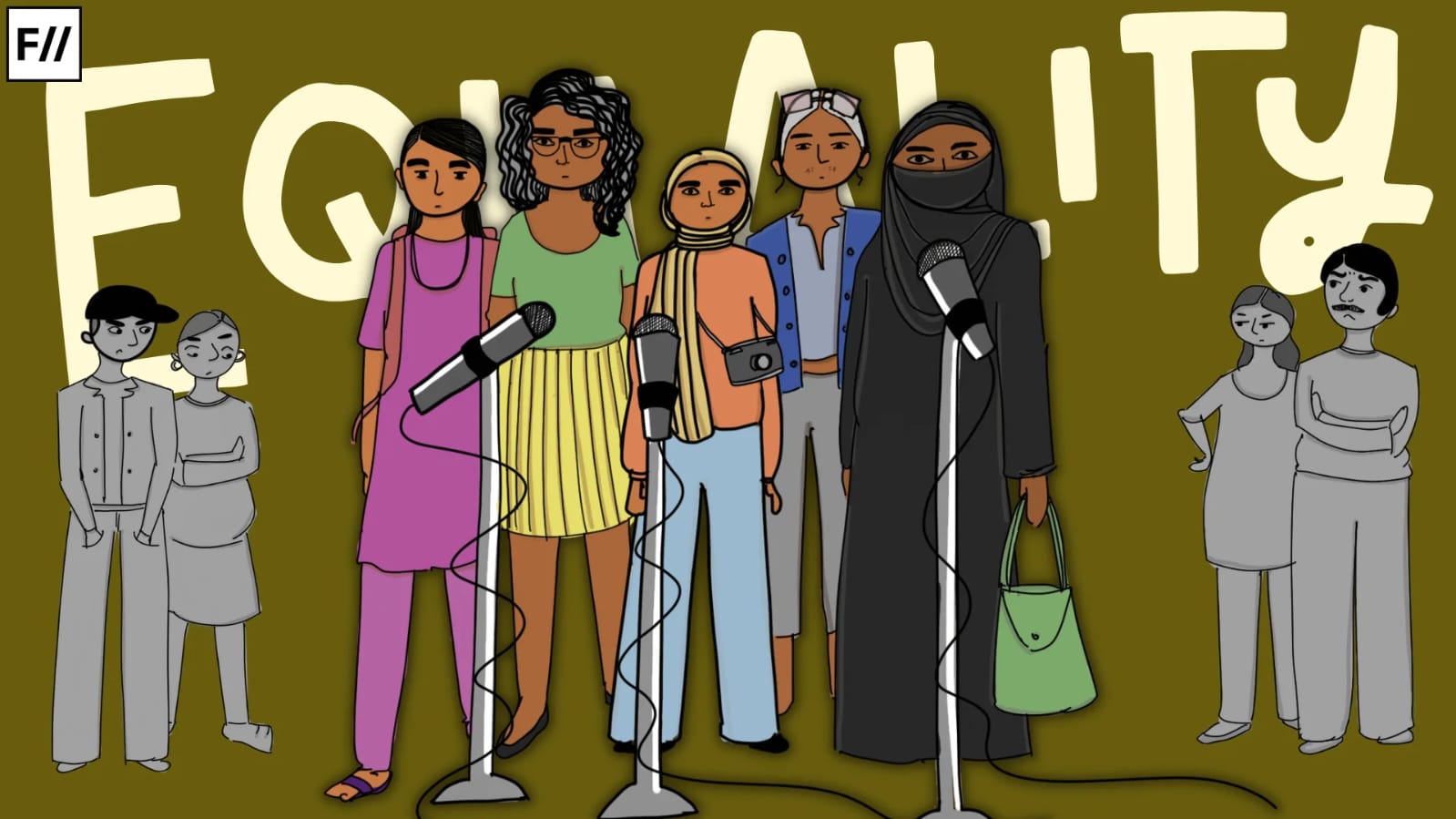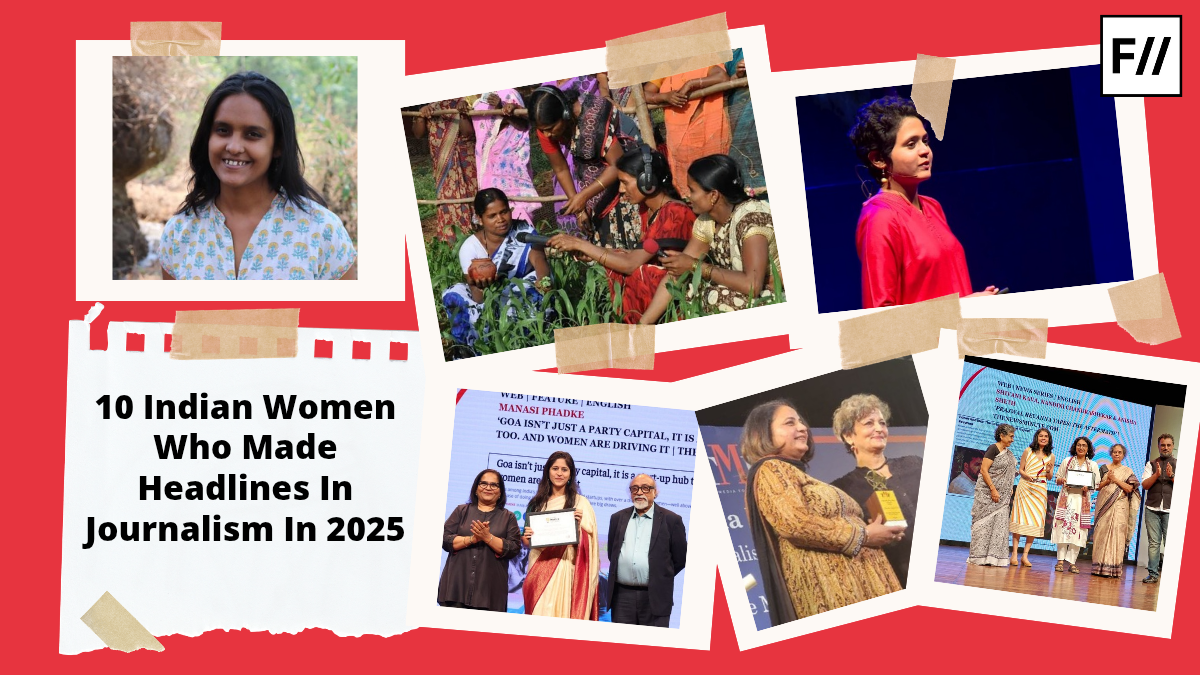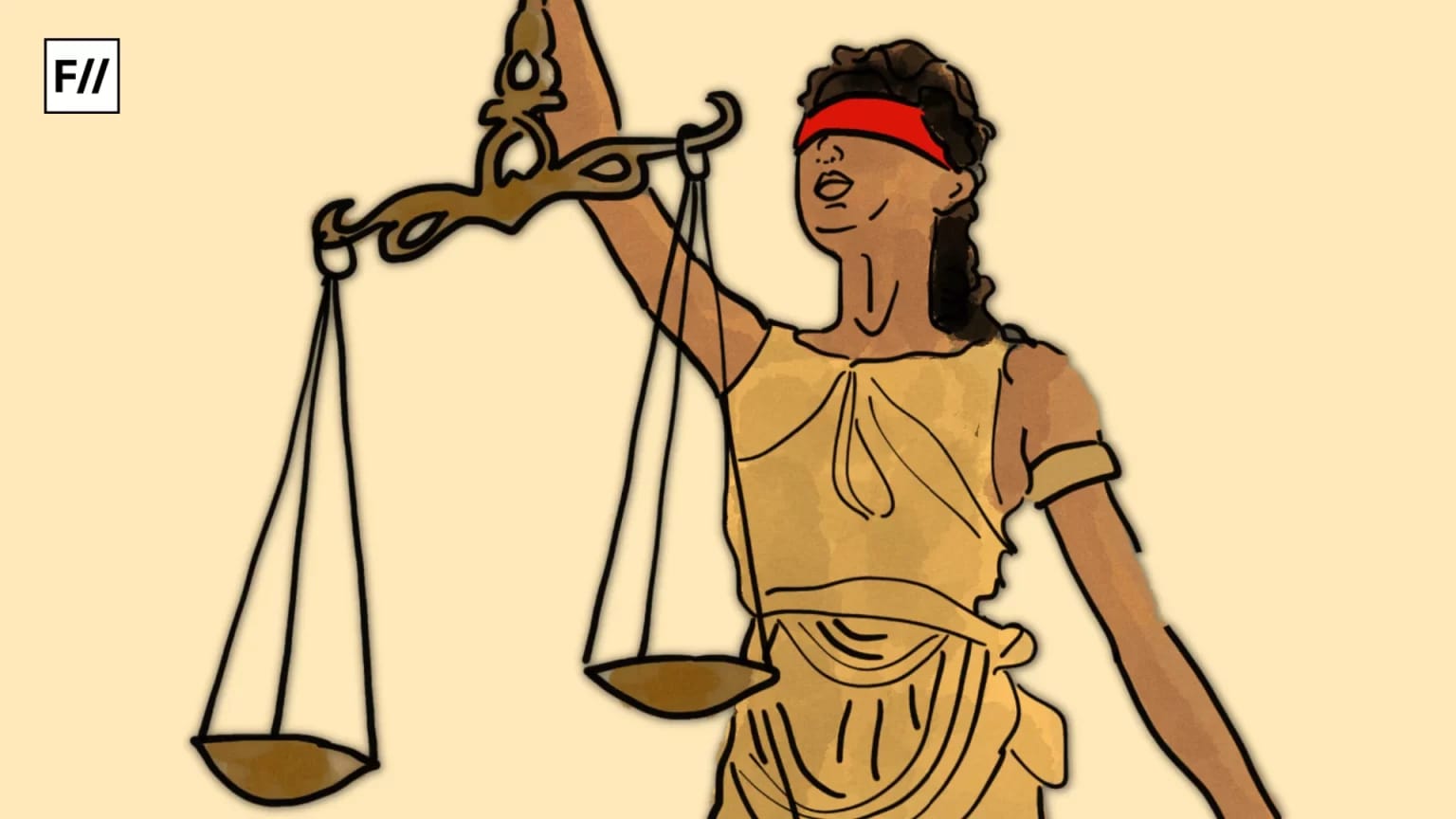Hindutva’s misogyny is often an underdiscussed facet of the ideology. While the far-right ideology is unquestionably rooted in Islamophobia and religious bigotry, it is just as deeply steeped in patriarchy – which is to say, Hindutva’s ethno-nationalist, Hindu supremacist ideas are also rabidly anti-women. The response to a recent honour killing in Gurugram has brought into stark focus the misogyny at the core of Hindutva.
Radhika Yadav, a 25-year-old tennis player, was shot and killed by her father on July 10, 2025, in their home. Following an injury that barred her from playing professional tennis, Yadav began to train others. According to reports, Yadav’s father was displeased by her financial independence and was ridiculed by the people in his town for living off his daughter’s earnings. He had repeatedly told Radhika Yadav to quit coaching; however, she had refused.
While even initial media reports and police statements correctly stated the murder stemmed from tensions over Yadav’s coaching career, on social media, the matter took on a communal colour. In 2024, Yadav had appeared in a music video alongside a Muslim man. In online Hindutva circles, news quickly spread that the killing was motivated by Yadav’s romantic involvement with the man.
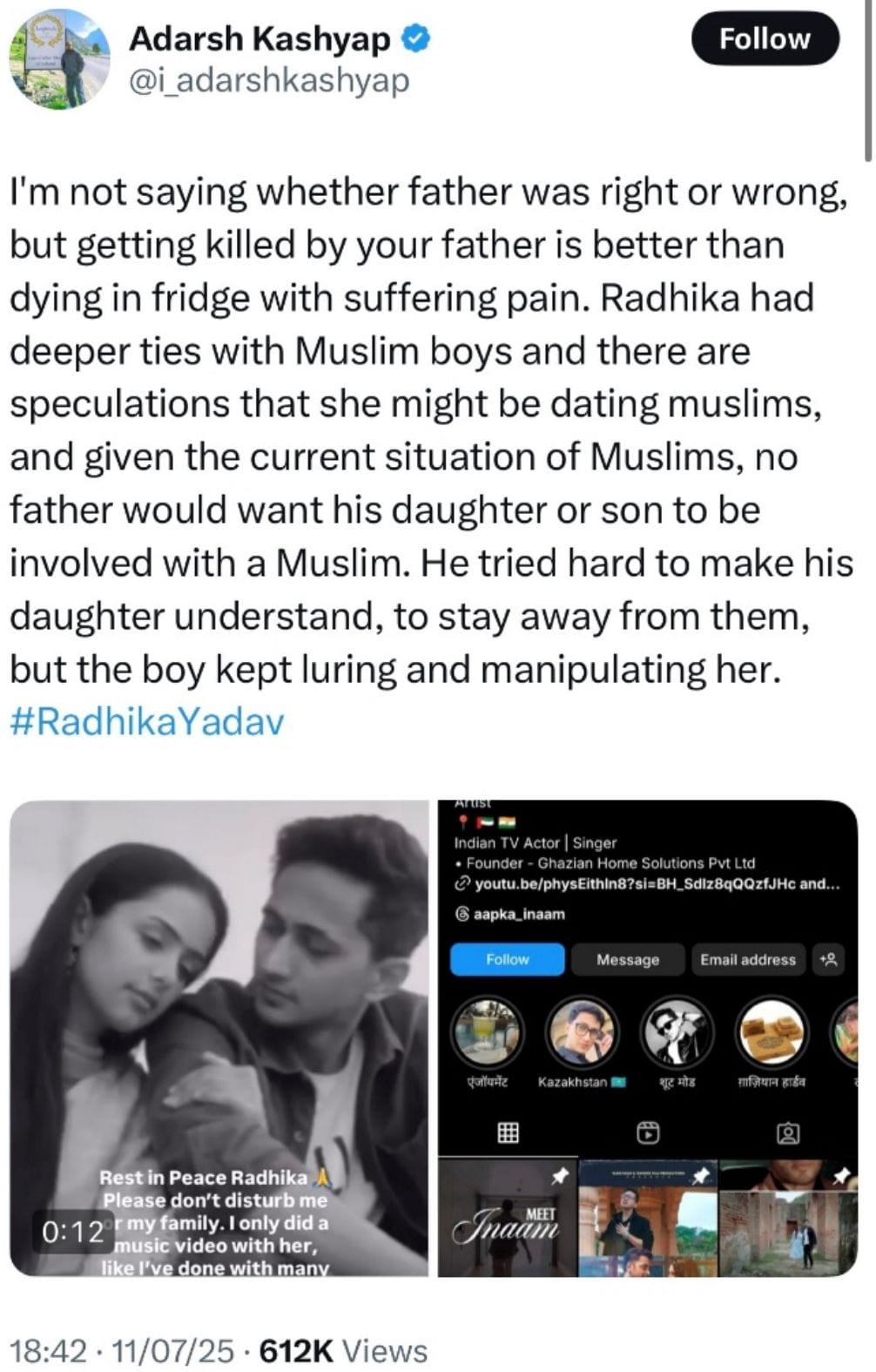
While the police clarified that Yadav’s appearance in the music video didn’t motivate the murder, many began to applaud, defend, and justify Yadav’s murder. Hindutva proponents on social media began celebrating the killer for preventing ‘love jihad‘ and for protecting his Hindu daughter from the machinations of Muslim men.
Far-right politics and patriarchy
Celebrating an honour killing is not out of left field for Hindutva. Aside from the Islamophobic, ethnonationalist ideas central to Hindutva, the far-right ideology is also rooted in masculinity and embodies hyper- and toxic masculine ideas, which inextricably link it to patriarchy. While the religious bigotry of Hindutva is plain to see because of its overt manifestations, its misogyny is better concealed and presents in more insidious ways.
Given the duality in Hindutva’s relationship with women, this is not unexpected. Many Hindutva outfits have dedicated wings for women and girls, where, apart from the Islamophobia and extremist ideas of the ideology, women and girls are fed anti-feminist and patriarchal rhetoric. This is the modus operandi of far-right outfits like the Durga Vahini, which specifically target and mobilise women.
While these organisations, on the one hand, teach women to fight for Hindu honour, on the other hand, they are asked to birth children and be good wives.
While these organisations, on the one hand, teach women to fight for Hindu honour, on the other hand, they are asked to birth children and be good wives. Within the ideology, their role is relegated to the domestic sphere, working in the shadows, while men take on a more central and direct role. The Rashtra Sevika Samiti, the women-led wing of the RSS, for instance, is organised around the ideas of matrutva, kartrutva, and netrutva (motherhood, activism, and leadership).
While Hindutva seeks women’s participation, it requires such participation to be within the bounds of patriarchal ideas of female propriety and respectability. This mirrors how other far-right ideologies operate with relation to women. Nazism’s expectation of women was similar. The Nazis claimed that women were ‘equal but different‘ and thought women’s life should revolve around Kinder, Küche, Kirche (children, kitchen, church).
While women were expected to serve Nazi interests, such service was expected to occur within the confines of the domestic sphere. Similar to what women-led Hindutva outfits teach their ranks today, Nazi women were taught that their role in nation-building and furthering Nazism was by having more children and inculcating values of the far-right ideology in them from a young age.
Misogyny as a feature of all far-right ideologies
Conservatism lies at the core of all far-right ideologies, which idolise traditionalism and seek a return to a time when one ethno-racial group held power over the others. The desire for such a social order invariably brings with it anti-feminist and misogynistic beliefs, as such orders were historically marked by extreme gender inequities.
The desire for such a social order invariably brings with it anti-feminist and misogynistic beliefs, as such orders were historically marked by extreme gender inequities.
This marriage of racial and religious bigotry with gender inequality is also not unique to Hindutva; it’s a feature of many other far-right ideologies across the globe. Consider the case of white supremacists in the United States. Donald Trump’s two terms as the President of the United States have seen state-sponsored violence against people of colour and immigrants, heightening racial tensions, and growing white supremacy. However, along with being jingoistic, racist, and Islamophobic, Trump’s brand of far-right politics is also glaringly misogynistic. His two terms in office have ushered in unprecedented threats to women’s autonomy and rights.
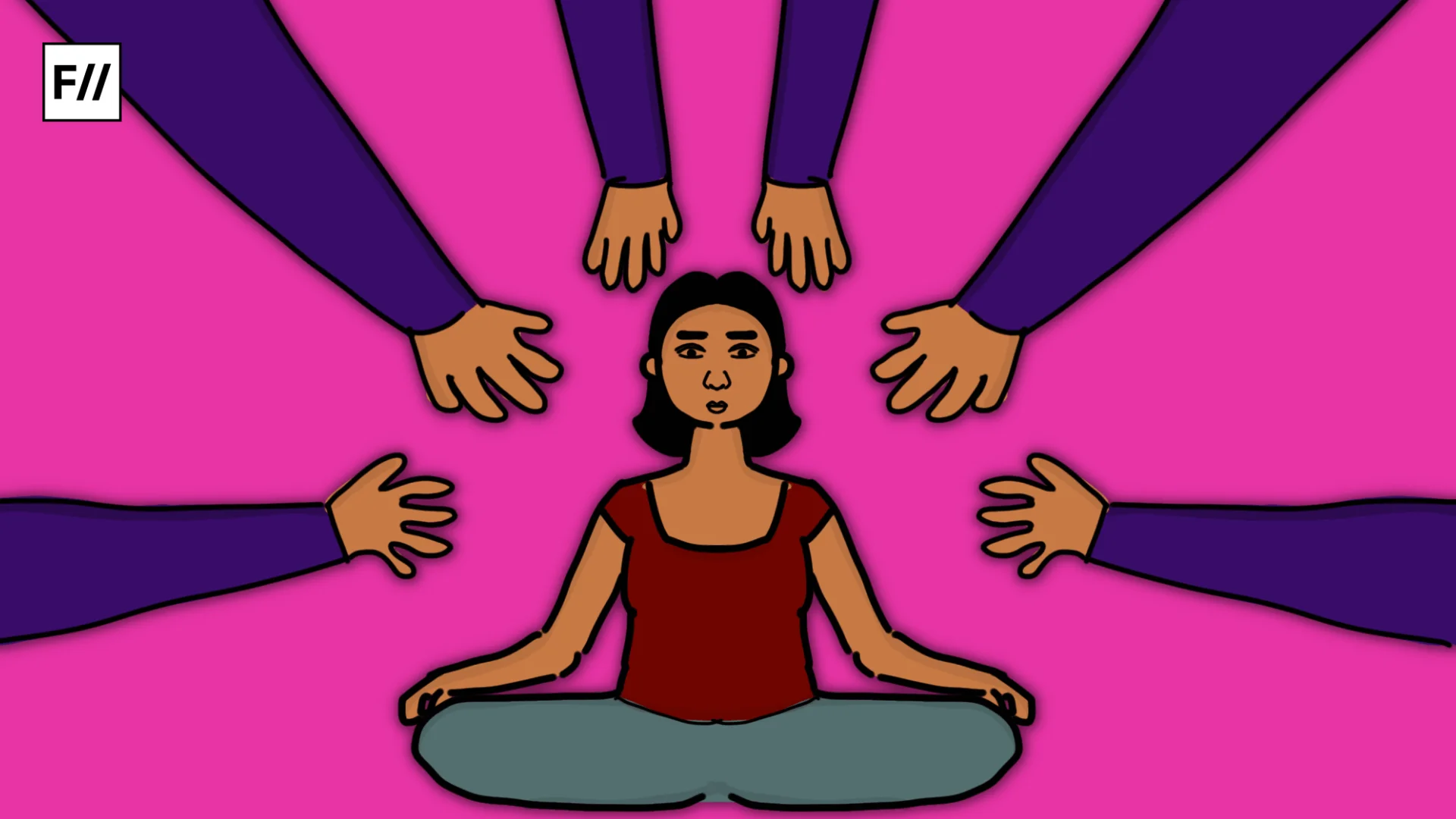
Under Trump’s first presidency, Roe v. Wade, a federal legislation guaranteeing abortion rights, was overturned. This made way for several Republican-governed states to bring in laws that prevent abortions around 4-6 weeks of gestation or ban them entirely. His second term in office has seen intensifying attacks on reproductive rights. DEI (Diversity, Equity, and Inclusion) hiring that enabled women’s increased participation (along with other racial, gender, and sexual minorities) in the workforce was rolled back.
Similar is the case with other far-right governments like in Italy (and here), Hungary, and Iran, among many others. Rarely does a far-right ideology not perpetuate misogyny and reinforce patriarchy. Calls for traditionalism are, in effect, calls for the subjugation of women, as well as racial, ethnic, religious, gender, and sexual minorities.
Islamophobia and misogyny as drivers of each other In Hindutva
In the case of Hindutva, the marriage between Islamophobia and misogyny exists by design, and is not a mere byproduct of traditionalist values. Misogyny and Islamophobia are closely intertwined in the practice of Hindutva, with one acting as the driver of the other.
A significant portion of Hindutva propaganda centres on Muslims and women, achieving the dual objective of perpetuating Islamophobia while reinforcing patriarchal norms.
A significant portion of Hindutva propaganda centres on Muslims and women, achieving the dual objective of perpetuating Islamophobia while reinforcing patriarchal norms. Conspiracy theories like love jihad, land jihad, and population jihad all utilise patriarchal fears and misogyny as drivers of Islamophobia, and the alarmism created by these conspiracy theories, in turn, legitimises exerting control over women and denying them autonomy and agency.
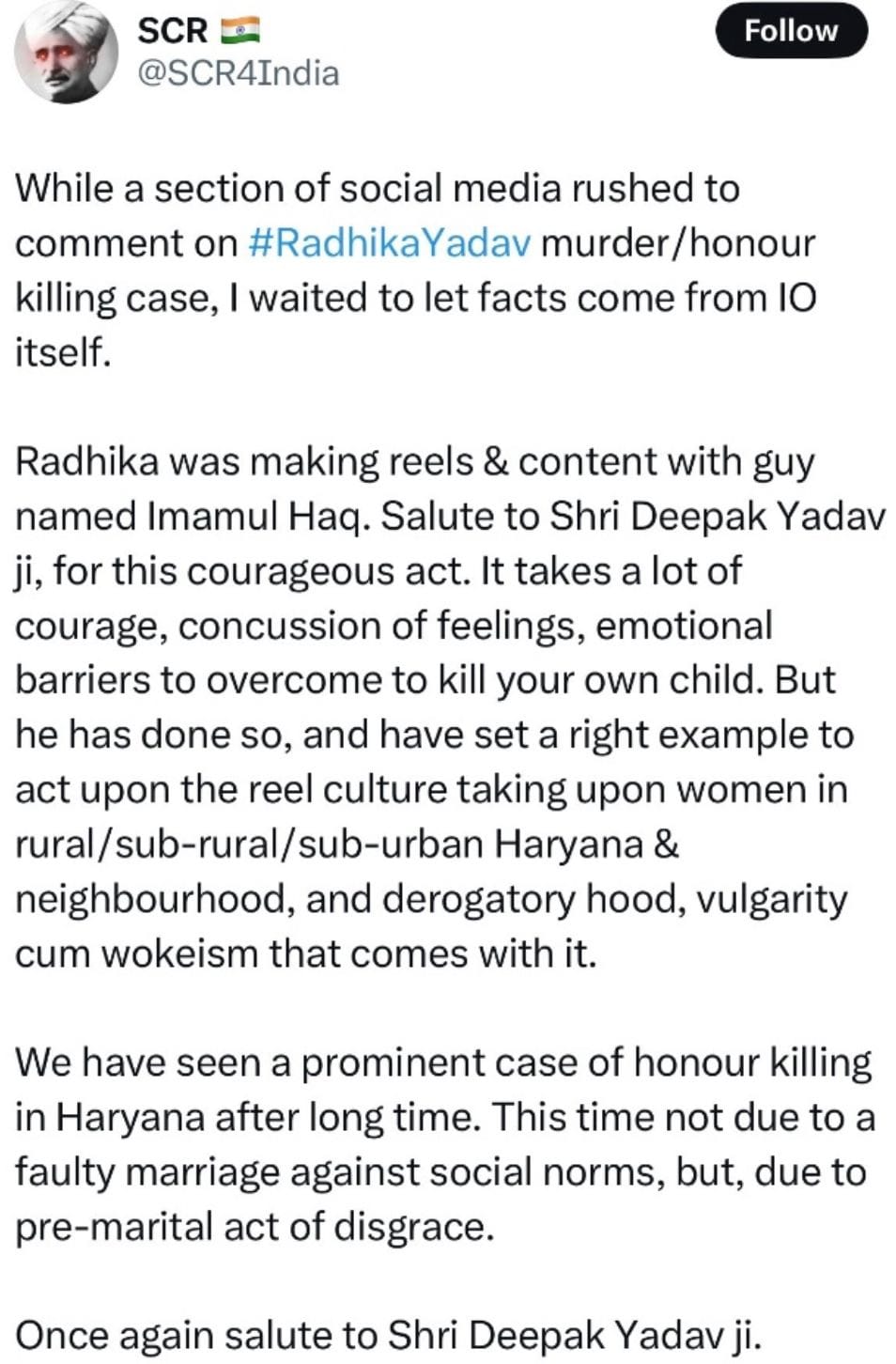
The Hindutva response to Radhika Yadav’s murder is the perfect embodiment of this. Here, the praise for a man who killed his child is not just rooted in Islamophobia, but also in misogyny. Yadav’s father didn’t become a Hindutva hero for merely ‘saving’ the Hindu woman from the imagined threat of love jihad, but for teaching her a lesson for defying patriarchal diktats.
The hypersexualised Muslim bogeyman and patriarchal anxieties of Hindutva
Love Jihadis, a 2020 book by authors Mihir Srivastava and Raul Irani, features a conversation with Chetna Devi, a self-styled anti-love-jihad crusader and godwoman associated with the Hindutva outfit Akhand Hindustan Morcha. In it, she says, ‘They [Muslim men] are better at satisfying a woman’s desire. Therefore, if a Hindu girl experiences intimacy with a Muslim boy, she falls madly in love, and even the honour of her family becomes a secondary consideration.‘ She went on to characterise Hindu women as naïve and Muslim men as sensuous.
The hypersexualisation of the other is not unique to Hindutva. Black men, for instance, are routinely hypersexualised by white supremacists and viewed as a threat. The idea of the hypersexual Muslim who will erode the Hindu family’s honour is a mainstay of Hindutva. To legitimise this imagined threat of the predatory Muslim, Hindutva draws on patriarchal fears regarding controlling female sexuality to preserve family honour.
The Hindutva response to Radhika Yadav’s murder is a stark reminder of the threat far-right ideologies pose to women, and of the violent misogyny simmering beneath all the rhetoric and chest-thumping. By creating bogeymen out of Muslims, Hindutva can perpetuate Islamophobia while simultaneously reinforcing the patriarchy – ensuring that socio-cultural power remains concentrated in the hands of a few upper-caste, Hindu men, and legitimising their subjugation of women, Muslims, and other marginalised identities.
About the author(s)

